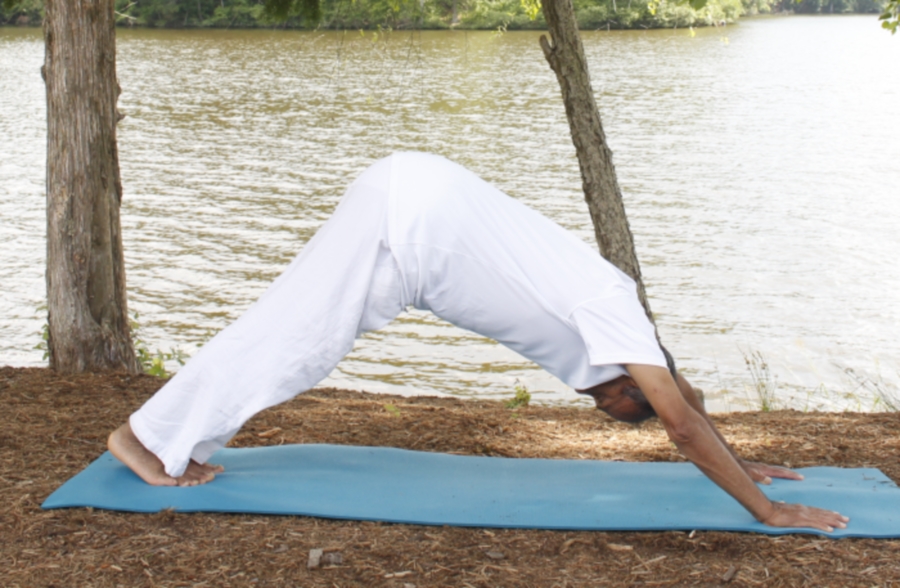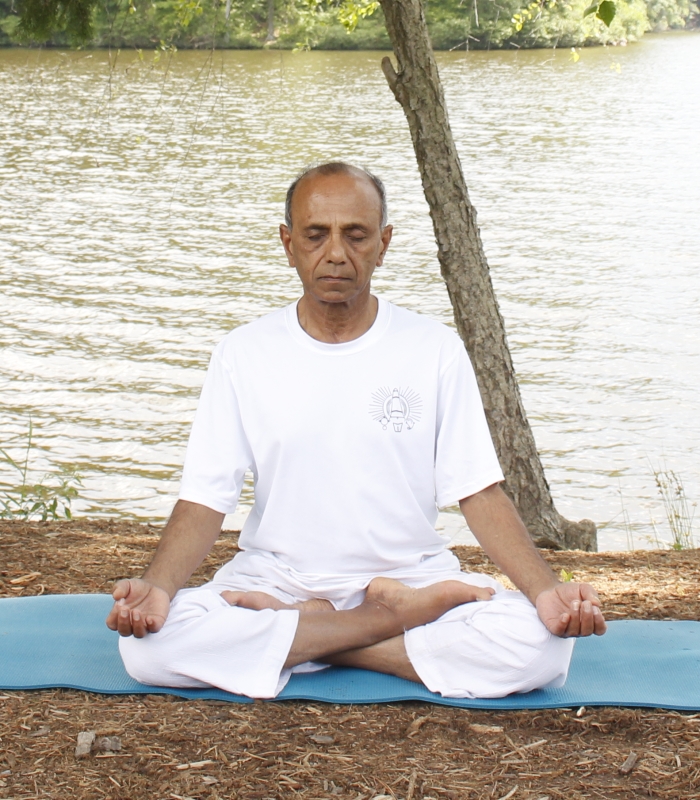What is Yoga?

Downward Facing Dog
Starting with today’s post, I will be writing about some of the most common ‘frequently asked questions’ related to yoga from time to time. I will start by answering the most important and the obvious question, "what is yoga?"
If you look up the word "yoga" in the Monier-Williams Sanskrit dictionary you will find close to 40 different meanings listed. Going through this list, you will realize that the meaning depends largely on the context in which it is used. It is fair to assume that the meaning has evolved throughout history.
As an example, in one of the most revered texts, The Bhagavad Gita, the word yoga has been used in the title of each of the eighteen chapters of the book. For example, the first chapter is titled, "Arjuna-vishada Yoga" (Yoga of Arjuna’s despondency). Here the word yoga is used to indicate Arjuna’s state of mind on the battlefield.
The word ‘Yoga’ is derived from the Sanskrit root ‘yuj’ which, depending upon the usage, can either mean ‘to join/yoke’ or ‘samadhi (total mental absorption). In the classical yoga text “Yoga Sutras by Patanjali”, yoga is defined as "yogash-chitta-vritti-nirodhaH" (sutra 1.2) which can be translated as “the ability to control the fluctuations of the mind-field”. In this context the meaning ‘samadhi’ is more appropriate since one can experience the state of Samadhi only when mind’s fluctuations have been fully arrested. When we look at it from the point of view of Vedanta, however, the word "yoga" is taken to mean the union or oneness between the individual self (the ‘jeeva’ or ‘atma’) and the universal consciousness (‘paramatma’).
Patanjali emphasizes practicing concentration and meditation in order to achieve a calm and peaceful mind. The need to maintain a steady and comfortable seated posture for meditation for long periods of time necessitates a body that is healthy and free of disease and a mind that is free of worry and fear. The art and science of hatha yoga was developed to achieve such a mind-body complex. Several great yogis, including Yogi Matsyendranath and Yogi Gorakhanath, are considered to be the ‘forefathers’ of hatha yoga. However, it is Yogi Swatmarama who compiled the wisdom of Hatha Yoga in his Hatha Yoga Pradeepika (HYP) which expounds the techniques such as asana, pranayama, mudra (hand and body gestures) and shatkarma (the six-fold cleansing techniques). Through regular practice of these techniques, the body is purified of all the toxins, the nadis (channels of subtle energy) are opened for free flow of prana (vital energy), and kundalini shakti (the dormant serpent power) gets awakened. Through control of prana, the mind is automatically controlled and one can achieve a deeper experience of meditation.

Padmasana (Lotus Pose)
As we can see, in the yoga sutras, yoga has been presented in two different ways:
- A state of the mind wherein fluctuations of the mind have been subdued (state of samadhi). This is based on the very definition of the word yoga mentioned above.
- The practice which will lead to the above state of the mind. Here, the reference is to the practice which involves all the eight limbs of yoga, called Ashtanga Yoga.
Patanjali, in his Yoga Sutras, has defined an 8-fold path called Ashtanga Yoga which is prescribed as a means of ‘sadhana’ (individual endeavor) to achieve the objectives of yoga. It is unfortunate that most people, and especially those in the West, associate the word yoga only with the practice of asana (physical postures) which is only one of these eight limbs. Even though asana is an important component of the practice of yoga, it needs to be integrated with other components of yoga to achieve full benefits from the practice. The traditional yoga practice consists of asana (physical postures), pranayama (breathing techniques), relaxation (yoga nidra) and meditation.
A common misconception among people is that they need to be flexible to practice yoga. I often hear statements like, “I can’t do yoga because I am not flexible”. Nothing could, in fact, be farther from the truth. As stated earlier, the objective of yoga is to attain a state of mind which is peaceful and stress-free. Flexibility happens to be a natural by-product of a regular yoga practice. Yoga is suitable for people of any age, gender, and physical condition. In fact, if you are not flexible, that in itself is a strong reason to practice yoga as with a regular practice the body will definitely become more flexible.
I would love to hear your own thoughts on the definition and practice of yoga. Please provide your feedback in the comments area.
Recent Comments